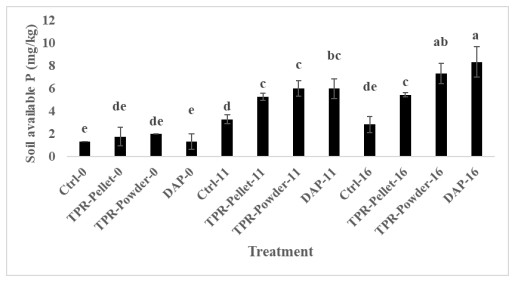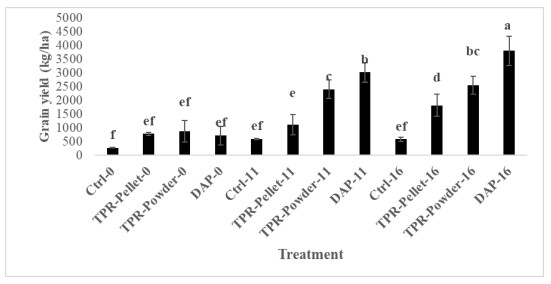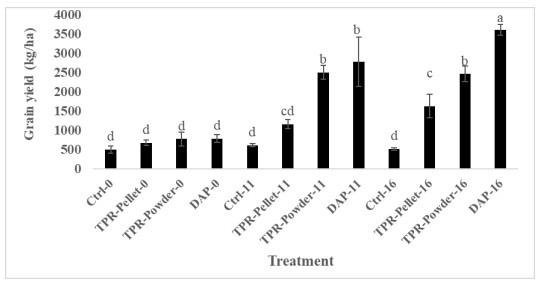1.
Introduction and main results
In this paper, we consider the two-dimensional viscous, compressible and heat conducting magnetohydrodynamic equations in the Eulerian coordinates (see [1])
Here x=(x1,x2)∈Ω is the spatial coordinate, Ω is a bounded smooth domain in R2, t≥0 is the time, and the unknown functions ρ=ρ(x,t), θ=θ(x,t), u=(u1,u2)(x,t) and H=(H1,H2)(x,t) denote, respectively, the fluid density, absolute temperature, velocity and magnetic field. In addition, the pressure P is given by
where R is a generic gas constant. The deformation tensor D(u) is defined by
The shear viscosity μ and the bulk one λ satisfy the hypotheses as follows
Positive constants cv, κ and ν represent, respectively, the heat capacity, heat conductivity and magnetic diffusivity coefficient.
The initial condition and boundary conditions for Eq (1.1) are given as follows
where n denotes the unit outward normal vector of ∂Ω.
Remark 1.1. The boundary condition imposed on H (1.3) is physical and means that the container is perfectly conducting, see [1,2,3,4].
In the absence of electromagnetic effect, namely, in the case of H≡0, the MHD system reduces to the Navier-Stokes equations. Due to the strong coupling and interplay interaction between the fluid motion and the magnetic field, it is rather complicated to investigate the well-posedness and dynamical behaviors of MHD system. There are a huge amount of literature on the existence and large time behavior of solutions to the Navier-Stokes system and MHD one due to the physical importance, complexity, rich phenomena and mathematical challenges, see [1,5,6,7,8,9,10,11,12,13,14,15,16,17,18,19,20,21,22,23,24,25,26] and the reference therein. However, many physically important and mathematically fundamental problems are still open due to the lack of smoothing mechanism and the strong nonlinearity. When the initial density contain vacuum states, the local large strong solutions to Cauchy problem of 3D full MHD equations and 2D isentropic MHD system have been obtained, respectively, by Fan-Yu [5] and Lü-Huang [6]. For the global well-posedness of strong solutions, Li-Xu-Zhang [7] and Lü-Shi-Xu [8] established the global existence and uniqueness of strong solutions to the 3D and 2D MHD equations, respectively, provided the smooth initial data are of small total energy. In particular, the initial density can have compact support in [7,8]. Furthermore, Hu-Wang [9,10] and Fan-Yu [11] proved the global existence of renormalized solutions to the compressible MHD equations for general large initial data. However, it is an outstanding challenging open problem to establish the global well-posedness for general large strong solutions with vacuum.
Therefore, it is important to study the mechanism of blow-up and structure of possible singularities of strong (or smooth) solutions to the compressible MHD system (1.1). The pioneering work can be traced to Serrin's criterion [12] on the Leray-Hopf weak solutions to the 3D incompressible Navier-Stokes equations, that is
where T∗ is the finite blow up time. Later, He-Xin [13] established the same Serrin's criterion (1.4) for strong solutions to the incompressible MHD equations.
First of all, we recall several known blow-up criteria for the compressible Navier-Stokes equations. In the isentropic case, Huang-Li-Xin [14] established the Serrin type criterion as follows
For the full compressible Navier-Stokes equations, Fan-Jiang-Ou [15] obtained that
under the condition
Later, the restriction (1.7) was removed in Huang-Li-Xin [16]. Recently, Wang [17] established a blow-up criterion for the initial boundary value problem (IBVP) on a smooth bounded domain in R2, namely,
Then, let's return to the compressible MHD system (1.1). Under the three-dimensional isentropic condition, Xu-Zhang [18] founded the same criterion (1.5) as [14]. For the three-dimensional full compressible MHD system, the criterion (1.6) is also established by Lu-Du-Yao [19] under the condition
Soon, the restriction (1.9) was removed by Chen-Liu [20]. Later, for the Cauchy problem and the IBVP of three-dimensional full compressible MHD system, Huang-Li [21] proved that
Recently, Fan-Li-Nakamura [22] extended the results of [17] to the MHD system and established a blow-up criterion which depend only on H and divu as follows
In fact, if H≡0 in (1.11), the criterion (1.11) becomes (1.8).
The purpose of this paper is to loosen and weaken the regularity of H required in the blow-up criterion (1.11) for strong solutions of the IBVP (1.1)–(1.3).
In this paper, we denote
Furthermore, for s≥0 and 1≤r≤∞, we define the standard Lebesgue and Sobolev spaces as follows
To present our results, we first recall the local existence theorem of the strong solution. Fan-Yu [5] attained the local existence and uniqueness of strong solution with full compressible MHD system in R3. In fact, when Ω is a bounded domain in R2, the method applied in [5,23] can also be used to the case here. The corresponding result can be expressed as follows.
Theorem 1.1. (Local existence theorem) For q>2, assume that the initial data (ρ0,θ0,u0,H0) satisfies
and the compatibility conditions as follows
for some g1,g2∈L2. Then there exists a time T0>0 such that the IBVP (1.1)–(1.3) has a unique strong solution (ρ,θ,u,H) on Ω×(0,T0] satisfying that
Then, our main result is stated as follows.
Theorem 1.2. Under the assumption of Theorem 1.1, suppose (ρ,θ,u,H) is the strong solution of the IBVP (1.1)–(1.3) obtained in Theorem 1.1. If T∗<∞ is the maximum existence time of the strong solution, then
for any b>2.
Remark 1.2. Compared to the blow-up criterion (1.11) attained in [22], Theorem 1.2 demonstrates some new message about the blow-up mechanism of the MHD system (1.1)–(1.3). Particularly, beside the same regularity on ‖divu‖L1(0,t;L∞) as (1.11) in [22], our result (1.16) improves the regularity on ‖H‖L∞(0,t;L∞) by relaxing it to ‖H‖L∞(0,t;Lb) for any b>2.
The rest of the paper is arranged as follows. We state several basic facts and key inequalities which are helpful for later analysis in Section 2. Sections 3 is devoted to a priori estimate which is required to prove Theorem 1.2, while we give its proof in Section 4.
2.
Preliminaries
In this section, we will recall several important inequalities and well-known facts. First of all, Gagliardo-Nirenberg inequality (see [27]) is described as follows.
Lemma 2.1. (Gagliardo-Nirenberg) For q∈(1,∞),r∈(2,∞) and s∈[2,∞), there exists some generic constant C>0 which may depend only on q,r and s such that for f∈C∞0(Ω), we have
Then, we give several regularity results for the following Lamé system with Dirichlet boundary condition (see [24])
We assume that U∈H10 is a weak solution of the Lamé system, due to the uniqueness of weak solution, it could be denoted by U=L−1F.
Lemma 2.2. Let r∈(1,∞), then there exists some generic constant C>0 depending only on μ,λ,r and Ω such that
● If F∈Lr, then
● If F∈W−1,r (i.e., F=divf with f=(fij)2×2,fij∈Lr), then
Furthermore, for the endpoint case, if fij∈L2∩L∞, then ∇U∈BMO(Ω) and
The following Lp-bound for elliptic systems, whose proof is similar to that of [28,Lemma 12], is a direct consequence of the combination of a well-known elliptic theory due to Agmon-Douglis-Nirenberg[29,30] with a standard scaling procedure.
Lemma 2.3. For k≥0 and p>1, there exists a constant C>0 depending only on k and p such that
for every v∈Wk+2,p(Ω) satisfying either
or
Finally, we give two critical Sobolev inequalities of logarithmic type, which are originally due to Brezis-Gallouet [31] and Brezis-Wainger [32].
Lemma 2.4. Let Ω⊂R2 be a bounded Lipschitz domain and f∈W1,q with q>2, then it holds that
with a constant C depending only on q.
Lemma 2.5. Let Ω⊂R2 be a smooth domain and f∈L2(s,t;H10∩W1,q) with q>2, then it holds that
with a constant C depending only on q.
3.
A priori estimate
Let (ρ,θ,u,H) be the strong solution of the IBVP (1.1)–(1.3) obtained in Theorem 1.1. Assume that (1.16) is false, namely, there exists a constant M>0 such that
First of all, the upper bound of the density can be deduced from (1.1)1 and (3.1), see [14,Lemma 3.4].
Lemma 3.1. Under the assumptions of Theorem 1.2 and (3.1), it holds that for any t∈[0,T∗),
where (and in what follows) C represents a generic positive constant depending only on μ,λ,cv,κ, ν, q, b, M, T∗ and the initial data.
Then, we give the following estimates, which are similar to the energy estimates.
Lemma 3.2. Under the assumptions of Theorem 1.2 and (3.1), it holds that for any t∈[0,T∗),
Proof. First, using the standard maximum principle to (1.1)3 together with θ0≥0 (see [15,25]) gives
Then, utilizing the standard energy estimates to (1.1) shows
Next, adding (1.1)2 multiplied by u to (1.1)4 multiplied by H, and integrating the summation by parts, we have
where one has used the following well-known fact
due to divH=0 and H⋅n|∂Ω=0.
Hence, the combination of (3.6) with (3.1), (3.4) and (3.5) yields (3.3). This completes the proof of Lemma 3.2. □
The following lemma shows the estimates on the spatial gradients of both the velocity and the magnetic, which are crucial for obtaining the higher order estimates of the solution.
Lemma 3.3. Under the assumptions of Theorem 1.2 and (3.1), it holds that for any t∈[0,T∗),
where ˙f≜u⋅∇f+ft represents the material derivative of f.
Proof. Above all, multiplying the equation (1.1)3 by θ and integrating by parts yield
Firstly, integration by parts together with (3.1) and Gagliardo-Nirenberg inequality implies that
where ˜b≜2bb−2>2 satisfies 1/b+1/˜b=1/2, and in the second inequality where one has applied the estimate as follows
Indeed, denote the average of θ by ˉθ=1|Ω|∫θdx, it follows from (3.2) and (3.3) that
which together with Poincaré inequality yields
And consequently, (3.11) holds.
Secondly, according to [17,21,33], Multiplying equations (1.1)2 by uθ and integrating by parts yield
Using the same arguments in [17,33], we have
Besides, according to (3.1) and (3.11) yields
Substituting (3.10), (3.15) and (3.16) into (3.9), and choosing ε suitably small, we have
where one has applied the key fact as follows
Furthermore, it follows from (3.1) and (1.1)4 that
In order to estimate ‖∇u‖L2˜b, according to [24,26], we divide u into v and w. More precisely, let
then we get
And hence, Lemma 2.2 implies that for any r>1,
and
Consequently, it follows from Gagliardo-Nirenberg inequality, (3.2), (3.11), (3.20), (3.22) and (3.23) that for any s≥2,
Putting (3.24) into (3.19) and utilizing Young inequality lead to
Adding (3.25) multiplied by 2ν−2(C1+1) to (3.17) and choosing ε suitably small, we have
Then, multiplying (1.1)2 by ut and integrating by parts, we get
Notice that
integration by parts together with (3.20) leads to
Moreover, define
according to (1.1) that E satisfies
Motivated by [17,21], it can be deduced from (3.30) that
Additionally, combining (3.1) and (3.24) yields
Substituting (3.28), (3.29), (3.31) and (3.32) into (3.27) yields
where
satisfies
Recalling the inequality (3.26), let
adding (3.26) multiplied by C6=max{C−14(C2+1),C−15(C3+1)} into (3.33) and choosing η suitably small, we have
where
satisfies
Finally, integrating (3.37) over (τ,t), along with (3.39) yields
where
Combined with (3.1), (3.3) and Gronwall inequality implies that for any 0<τ≤t<T∗,
Utilizing Lemma 2.5, we have
Combining (3.1), (3.2), (3.11), (3.22), (3.23) and Sobolev inequality leads to
this implies that
Substituting (3.45) into (3.43) indicates
Using (3.3), one can choose some τ which is close enough to t such that
which together with (3.42) and (3.46) yields
Noticing the definition of ψ in (3.41), we immediately have (3.8). The proof of Lemma 3.3 is completed. □
Now, we show some higher order estimates of the solutions which are needed to guarantee the extension of local solution to be a global one under the conditions (1.12)–(1.14) and (3.1).
Lemma 3.4. Under the assumptions of Theorem 1.2 and (3.1), it holds that for any t∈[0,T∗),
Proof. First, it follows from (3.8), Gagliardo-Nirenberg and Poincaré inequalities that for 2≤q<∞,
Combining (1.1)4, (3.3), (3.8) and (3.18) yields
Furthermore, it can be deduced from (3.8), (3.24), (3.50) and (3.51) that
Then, according to (3.11) and Sobolev inequality, we get
which combined with (1.1)3, (3.8), and choosing ε suitably small yield
Therefore, the combination of (3.51) and (3.52) yields
Together with (3.53) and (3.54) gives
Now, we bound ‖∇ρ‖W1,q and ‖u‖H2. For r∈[2,q], it holds that
where in the last inequality one has applied the following fact
Taking (3.2), (3.56), (3.58) and Lemmas 2.2–2.4, we get
Putting (3.59) into (3.57), it can be deduced from Gronwall inequality that
Finally, let r=2 in (3.60), according to Lemma 2.2, (3.50), (3.55) and (3.58) yields
Therefore, together with (3.55), (3.56), (3.60) and (3.61), we get (3.49). The proof of Lemma 3.4 is completed. □
4.
Proof of Theorem 1.2
With the priori estimates in Lemmas 3.1–3.4, we can prove Theorem 1.2.
Proof of Theorem 1.2. Assume that (1.16) is false, namely, (3.1) holds. Notice that the general constant C in Lemmas 3.1–3.4 is independent of t, that is, all the priori estimates attained in Lemmas 3.1–3.4 are uniformly bounded for any t≤T∗. Therefore, the function
satisfies the initial conditions (1.12) at t=T∗.
Due to
therefore
with
and
satisfying g1,g2∈L2. Thus, (ρ,θ,u,H)(x,T∗) also satisfies (1.13) and (1.14).
Hence, Theorem 1.1 shows that we could extend the local strong solutions beyond T∗, while taking (ρ,θ,u,H)(x,T∗) as the initial data. This contradicts the hypothesis of Theorem 1.2 that T∗ is the maximum existence time of the strong solution. This completes the proof of theorem 1.2. □
5.
Conclusions
This paper concerns the blow-up criterion for the initial boundary value problem of the two-dimensional full compressible magnetohydrodynamic equations in the Eulerian coordinates. When the initial density allowed to vanish, and the magnetic field H satisfies the perfect conducting boundary condition H⋅n=curlH=0, we prove the blow-up criterion limt→T∗(‖H‖L∞(0,t;Lb)+‖divu‖L1(0,t;L∞))=∞ for any b>2, which depending on both H and divu.
Acknowledgments
The author sincerely thanks the editors and anonymous reviewers for their insightful comments and constructive suggestions, which greatly improved the quality of the paper. The research was partially supported by the National Natural Science Foundation of China (No.11971217).
Conflict of interest
The author declares no conflict of interest in this paper.

















 DownLoad:
DownLoad: